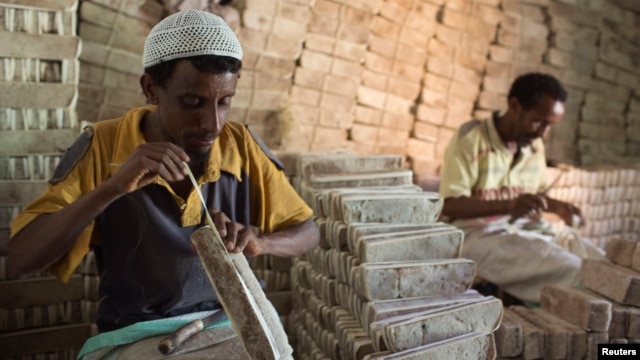Ethiopia: Human rights group says government accountable for the death of a political prisoner at an Ethiopian jail
The following is a statement from the Human Rights League of the Horn of Africa (HRLHA) on the killing of an Oromo political prisoner, Eng. Tesfahun Chemeda, at the Abyssinian/Ethiopian prison of Qaallittii on Aug. 24, 2013. HRLHA is a nonpolitical organization (with the UN Economic and Social Council – (ECOSOC) Consultative Status), which attempts to challenge abuses of human rights of the people of various nations and nationalities in the Horn of Africa.
Ethiopia: The Government is accountable for the death of a political prisoner at an Ethiopian jail
HRLHA Statement
August 2013
The Human Rights League of the Horn of Africa strongly condemns the atrocious torture and inhuman treatment by the Ethiopian government against its citizens, and holds it accountable for the death of a political prisoner and prisoner of conscience Engineer Tesfahun Chemeda on August 24, 2013 in Kaliti prison.
HRLHA informants confirmed that Engineer Chemeda died in Kaliti Penitentiary due to the severe torture inflicted on him while he was in different detentions centers from 2007 until the day he died. We also protest the fact that he was denied medical treatment by the government.
Engineer Tesfahun Chemeda, an Oromo national, was handed over by Kenyan authorities to Ethiopian Security agents in April 2007 from where he had granted a refugee status from UNHCR in Kenya after he had fled to Kenya to escape persecution by the EPRDF government of Ethiopia.
Engineer Tasfahun Chemeda was one of the 15 Oromo nationals who was sentenced to life in prison in 2010 by the Ethiopian court (http://humanrightsleague.com/2010/07/a-call-for-the-reversal-of-theracial-politically-motivated-and-discriminatory-sentence-by-a-court-in-ethiopia/) for his activism and political beliefs that were different from the ruling EPRDF government of Ethiopia.
The Ethiopian Government is accountable for:
1. Torturing Mr. Chemeda in prison, thereby violating the 1984 Convention against Torture and Other Cruel, Inhuman or Degrading Treatment or Punishment, an agreement which Ethiopia signed and ratified in 1994.By handing over the Oromo refugees and others, the Kenyan Government is also breaching its obligations under international treaties as well as customary laws.
2. For denying Engineer Tesfahun medical treatment, violating the rights of prisoners – which are clearly stated in international laws and International Covenant on Civil and Political Rights, Article 10(1): “All persons deprived of their liberty shall be treated with humanity and with respect for the inherent dignity of the human person.” and the Constitution of the Federal Democratic Republic of Ethiopia, the Rights of Persons Held in Custody and Convicted Prisoners, Article 21 (1): “All persons held in custody and persons imprisoned upon conviction and sentencing have the right to treatments respecting their human dignity.”
1. Under the Convention against Torture and Other Cruel, Inhuman or Degrading Treatment or Punishment (1465 U.N.T.S. 185), the Kenyan Government has the obligation not to return a person to a place where they will face torture or ill-treatment.The Human Rights League of the Horn of Africa calls upon the Ethiopian authorities to immediately carry out an independent investigation into Engineer Tesfahun’s death, including whether torture played a part in his death, and disclose to the public anyone found responsible and bring that person to justice. The HRLHA also calls upon the Western political allies of the TPLF/EPRDF Government of Ethiopia to exert pressures so that it is forced to turn around, and start working on the genuine democratization of the country, halting the systematic elimination of citizens who demand basic rights and fundamental freedoms.
2. Article 3 of the Convention against Torture provides: No state party shall expel, return (“refouler”) or extradite a person to another state where there are substantial grounds to believe that they would be in danger of being subjected to torture.
Finally we extend our condolences to Tesfahun’s family and friends in their time of grief as well as all Ethiopians who have been falsely accused, illegally detained or wrongly killed, at the hands of the brutal and hypocritical regime. Engineer Tesfahun is just one of thousands of victims of the EPRDF government’s campaign of violence, repression and efforts to curtail basic freedoms and fundamental rights of Ethiopians at all costs.
- HRLHA






